Complete Solutions to Multiple Correct of chapter CENTRE OF MASS of Class 11 book with complete answers and questions
| Class 11 | PHYSICS |
| Chapter | CENTRE OF MASS |
| CENGAGE PHYSICS | Multiple Correct |
| Number Of Questions | 25 |
| Academic Year | 2023-24 |
A ball strikes a smooth horizontal floor obliquely and rebounds inelastically.
03:32View SolutionChoose the correct statements from the following
04:30View SolutionAn ideal spring is permanently connected between two blocks of masses `M` and `m`. The blocks-spring system can move over a smooth horizontal table along a straight line along the length of the spring as shown in Fig.The blocks are brought nearer to compress the spring and then released. In the subsequent motion,
 03:28View Solution
03:28View SolutionA steel ball of mass `2m` suffersone-dimensional elastic collision with a row of three steel balls, each of mass m. If mass `2m` has collided with velocity `v` and the three balls numbered `1,2,3` were initially at `2`. rest, then after the collision
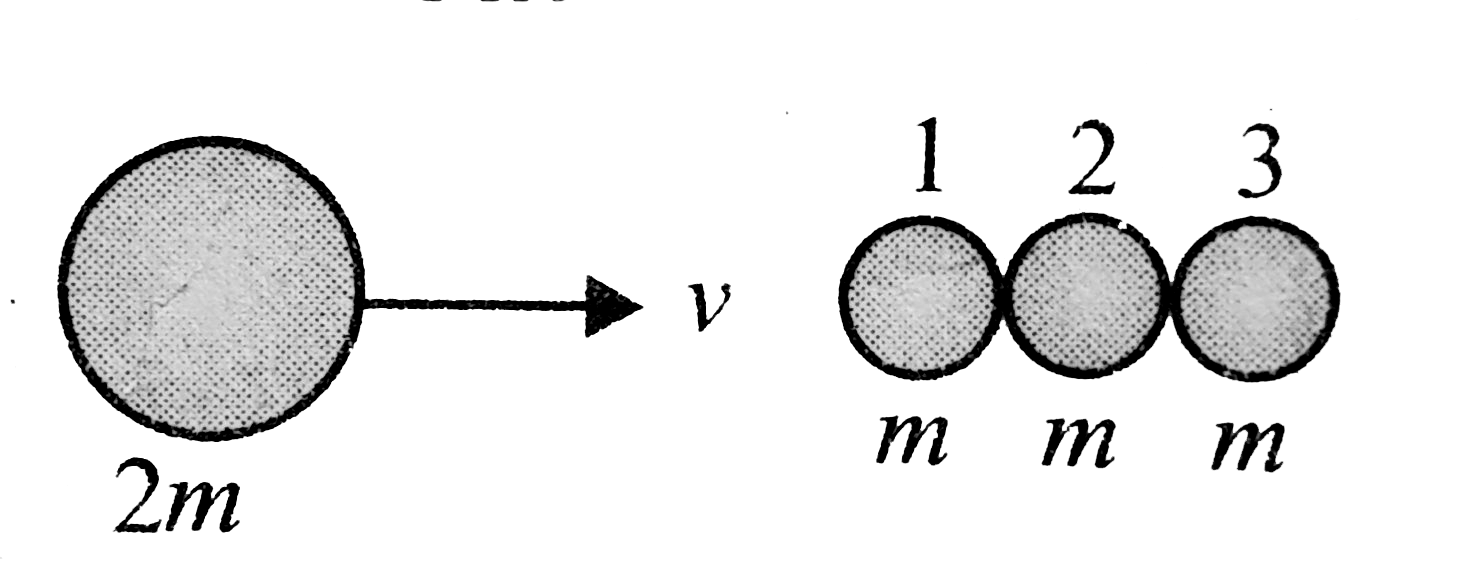 03:49View Solution
03:49View SolutionA man standing on the edge of the terrace of a high rise building throws a stone, vertically up with at speed of `20 m//s`. Two seconds later, an identical stone is thrown vertically downwards with the same speed of `20 m`,. Then
06:01View SolutionA block of mass m moving with a velocity `v_(o)` collides with a stationary block of mass M at the back of which a spring of spring constant k is attached, as shown in the figure. Selct the correct alternative (s).
 02:25View Solution
02:25View SolutionTwo particles of masses `m_(1)` and `m_(2)` and velocities `u_(1)` and `alphau_(1)(alpha!=0)` make an elastic head on collision. If the initial kinetic energies of the two particles are equal and `m_(1)` comes to rest after collision, then
06:01View SolutionA pendulum bob of mass `m` connected to the end of material string of length `l` is released from rest from horizontal position as shown in the figure. At the lowest point the bob makes an elastic collision with a stationary block of mass `5m`, which is kept on a frictionless surface. Choose out the correct statement(s) for the instant just after the impact.
 08:18View Solution
08:18View SolutionA string of length `3l` is connected to a fixed cylinder whose top view is shown in Fig. The string is initially slack. The other end of the string (connected to a marble) is moving at a constant velocity of `10 m//s` as shown. The string will get stretched at some instant and impulsive tension occurs in the string. If hinge is exerting a force of `40000 N` for `0.25 ms` on the cylinder to bear up the impact of impulsive tension, then mark the correct statements. (Take string to be light, breaking tension of the string is `2x10^5N)`
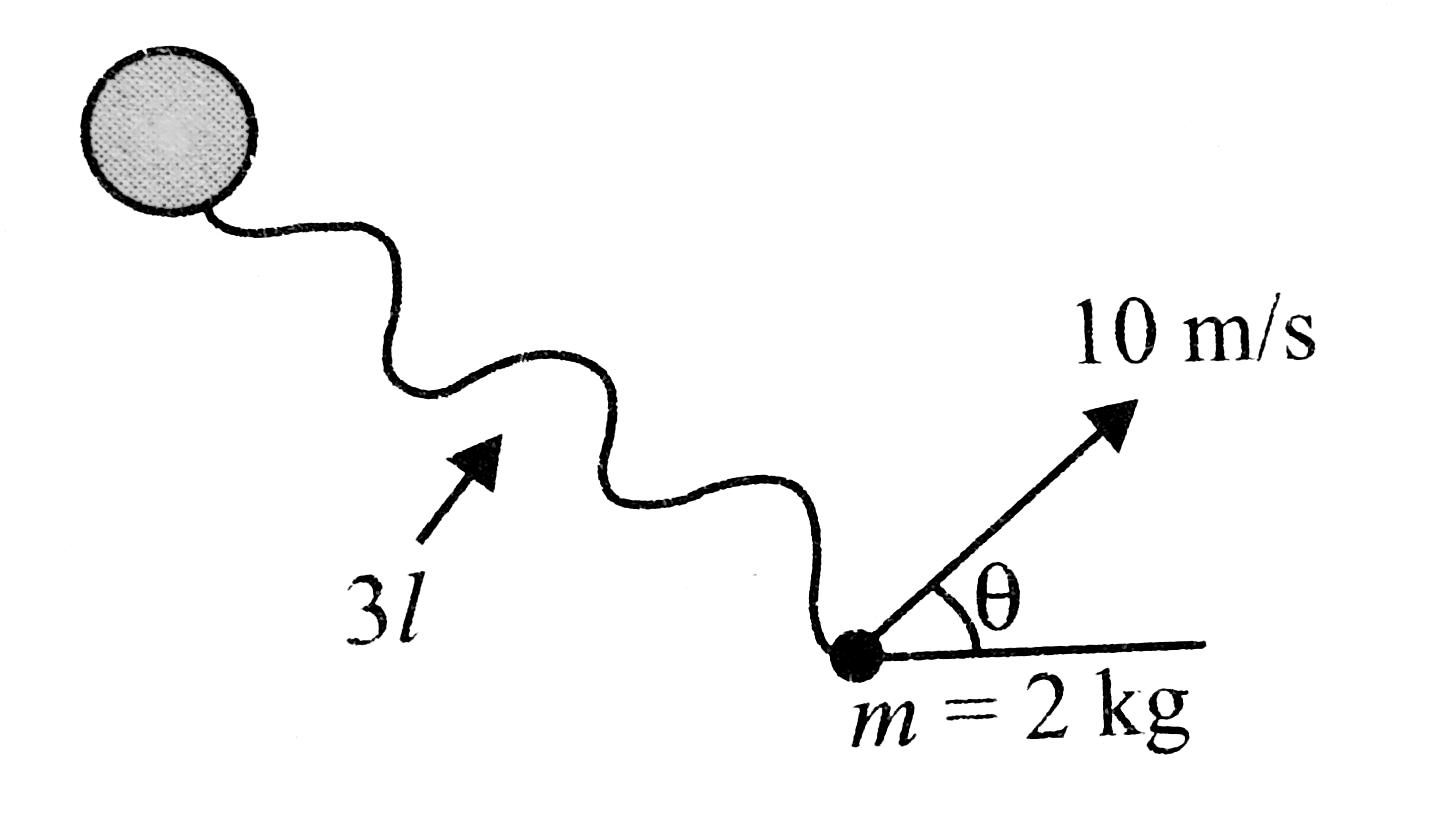 06:48View Solution
06:48View SolutionIn the figure, the block `B` of mass `m` starts from rest at the top of a wedge `W` of mass `M`. All surfaces are without friction. `W` can slide on the ground. `B` slides down onto the ground, moves along it with a speed v, has an elastic collision with the wall, and climbs back on to `W`.
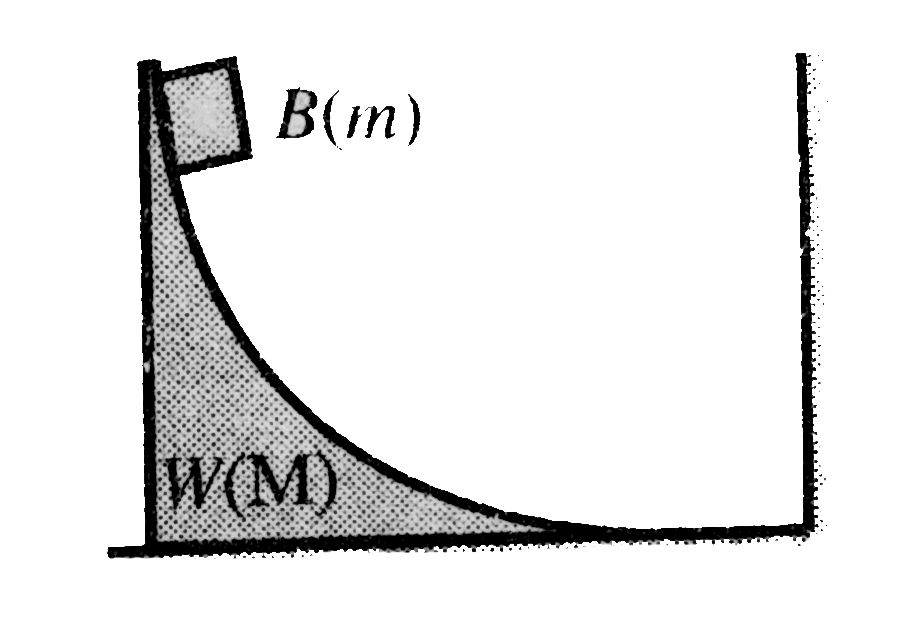 03:48View Solution
03:48View SolutionTwo blocks `A` and `B` of masses in and `2m` respectively placed on a smooth floor are connected by a spring. A third body `C` of mass `m` moves with velocity `v_(0)` along the line joining `A` and `B` and collides elastically with `A`. At a certain instant of time after collision it is found that the instantaneous velocities of `A` and `B` are same then:
 04:05View Solution
04:05View SolutionFigure shows two identical blocks each of mass `m` kept on a smooth floor. Block `A` is connected to front wall with a just taut straight string and block `B` is connected to rear wall with a relaxed spring. Assume that the floor of the train car is smooth and exerts no horizontal forces on the blocks. Mark the correct statement(s).
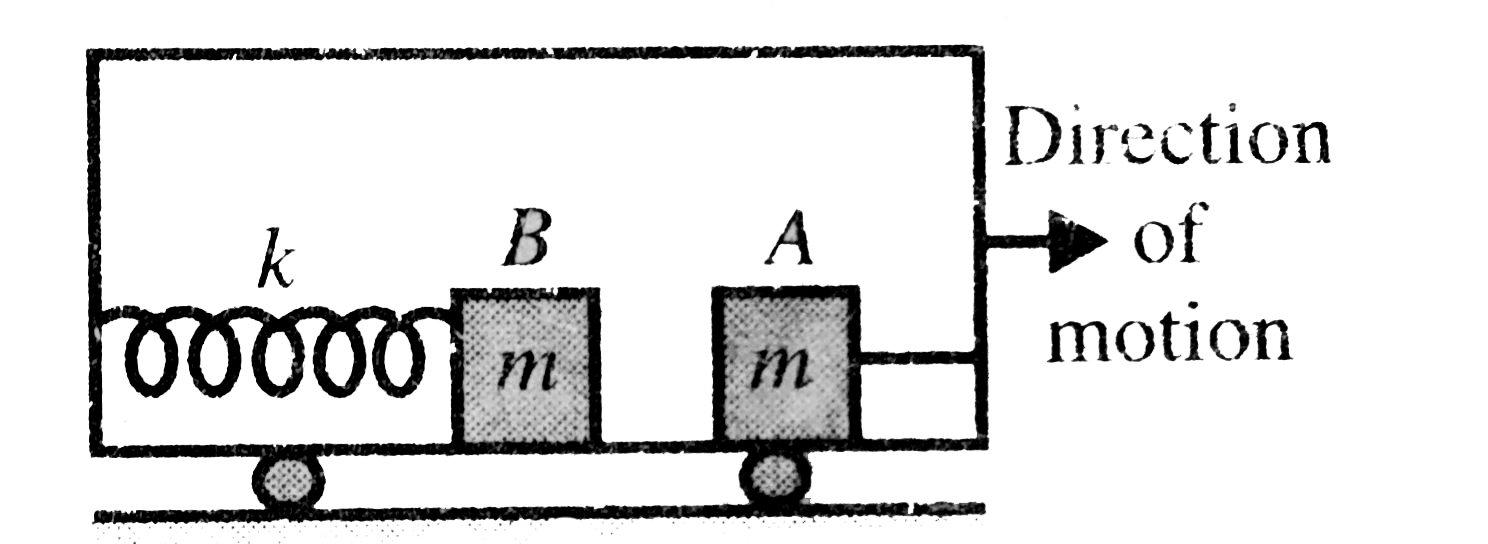 05:30View Solution
05:30View SolutionA ball of mass `1 kg` is dropped from a height of `3.2 m` on smooth inclined plane. The coefficient of restitution for the collision is `e= 1//2`. The ball's velocity become horizontal after the collision.
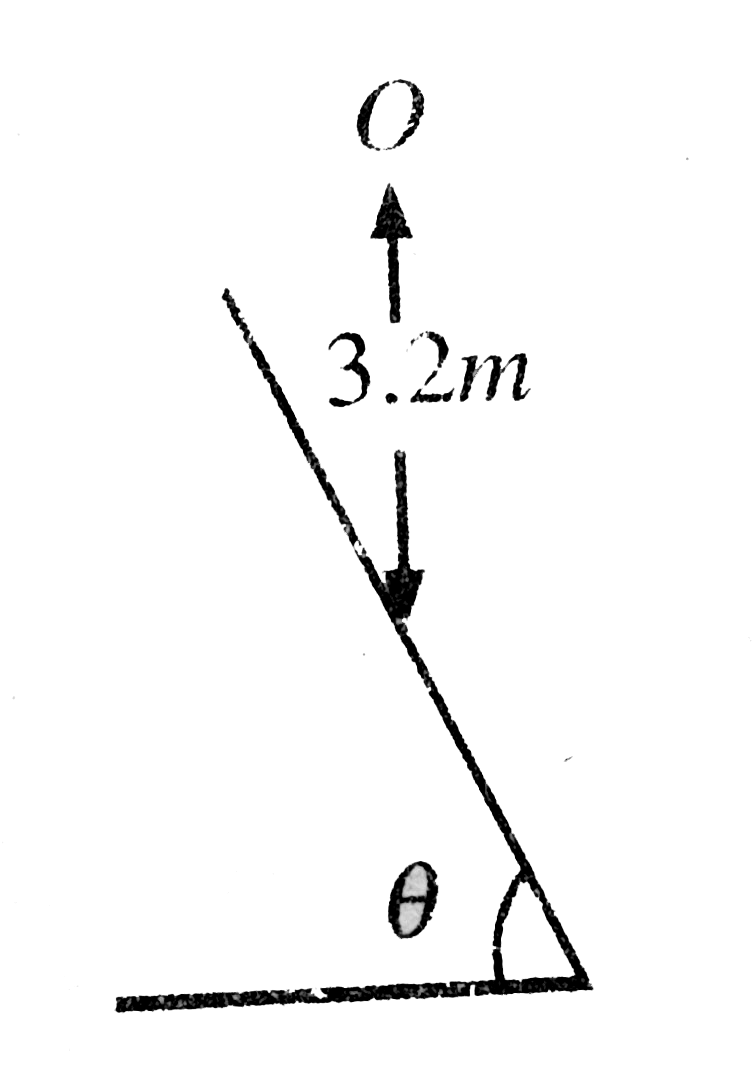 06:51View Solution
06:51View SolutionA particle of mass `m` collides with another stationary particle of mass `M` such that the second particle starts moving and the first particle stops just after the collision. Then which of the following conditions must always be valid ?
02:50View SolutionConsider two skaters `A` and `B` initially at rest on ice -(friction is negligible) with `A` holding a ball. A has greater mass than `B` and the ball has some significant mass. A throws the ball to `B`. `B` catches it and throws it back to `A` who catches it again. The magnitudes of the skater's (excluding ball) final velocities, A momentum and kinetic energies (denoted below as `v, p` and `K` respectively) are related as
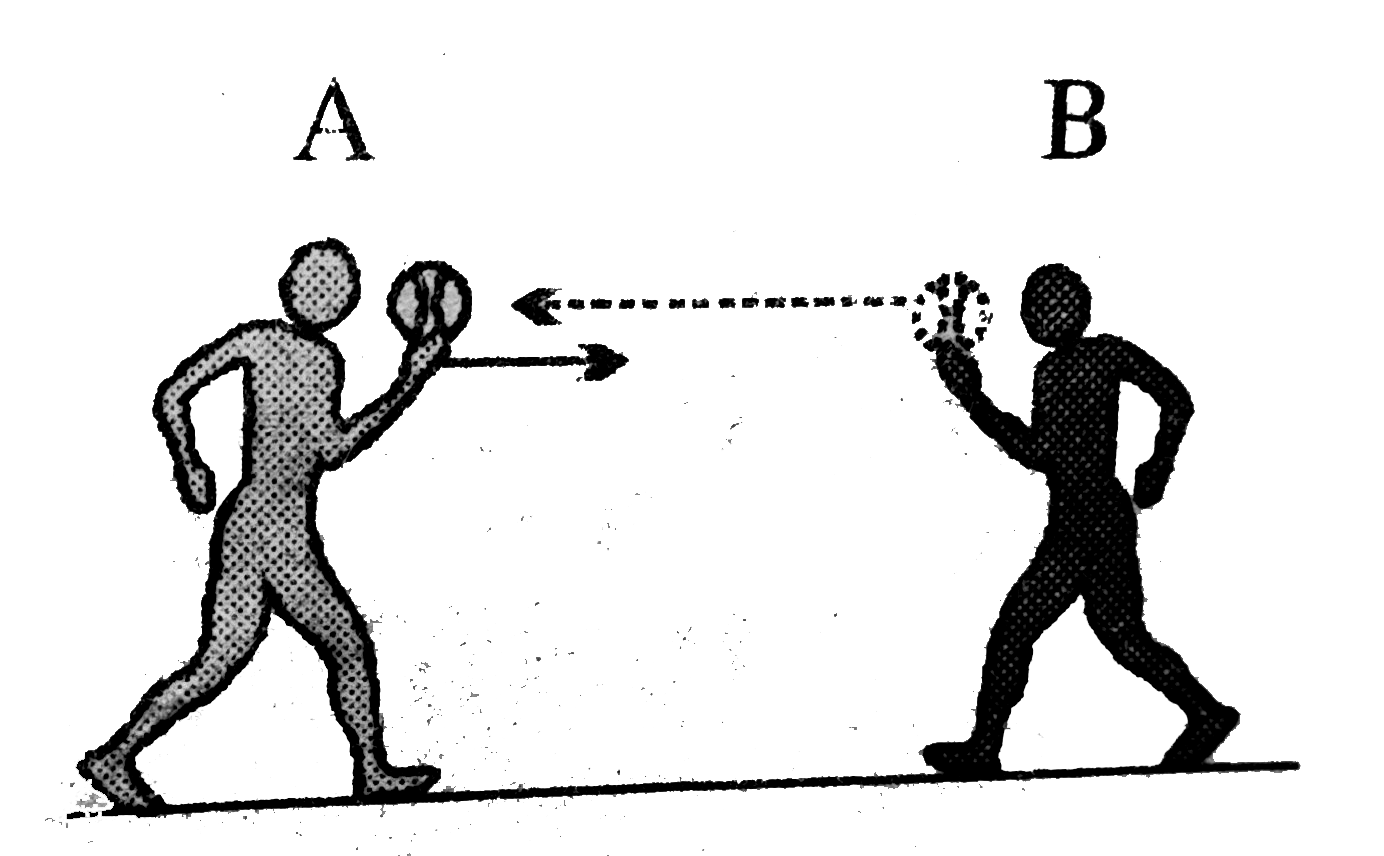 02:21View Solution
02:21View SolutionA man is standing on a plank which is placed on smooth horizontal surface. There is sufficient friction between feet of man and plank. Now man starts running over plank, correct statement is/are
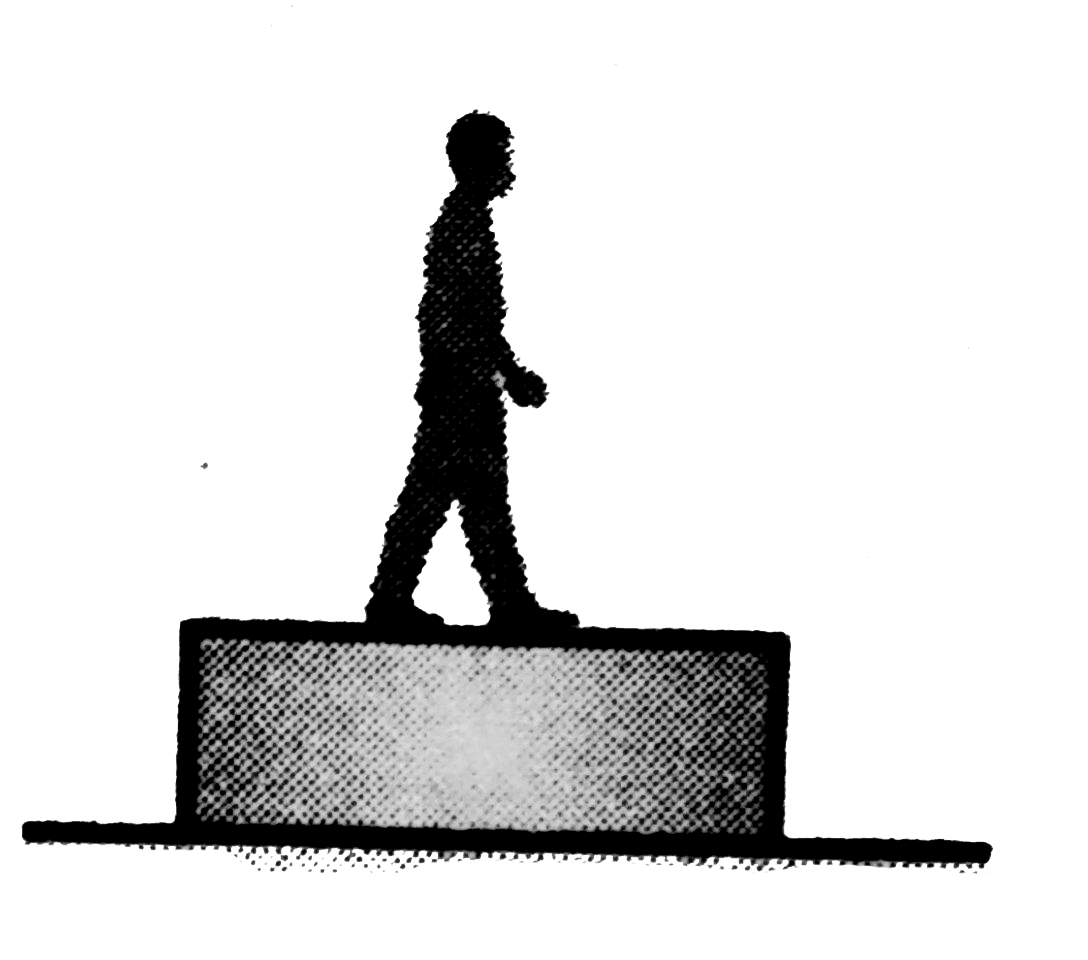 03:57View Solution
03:57View SolutionTwo particles of equal mass in are projected from the ground with speeds `v_(1)` and `v_(2)` at angles `theta_(1)`, and `theta_(2)` as shown in the figure. Given `theta_(2)gttheta_(1)` and `v_(1)costheta_(1)=v_(2)costheta_(2)`Which statement/s is/are correct?
 05:46View Solution
05:46View SolutionA particle A suffers an oblique elastic collision particle `B` that is at rest initially. If their masses with a are the same, then after the collision
02:16View SolutionSuppose two particles `1 and 2` are projected in vertical plane simultaneously.
Their angles of projection are `30^@ and theta`, respectively, with the horizontal. Let they collide after a time`t` in air. Then
 .13:02View Solution
.13:02View SolutionA particle of mass `m_(1) = 4 kg` moving at `6hatims^(-1)` collides perfectly elastically with a particle of mass `m_(2) = 2` moving at `3hati ms^(-1)`
05:19View SolutionConsider a block of mass `10 kg`. which rests on as smooth surface and is subjected to a horizontal force of `6N`. If observer `A` is in a fixed frame `x`.
 04:03View Solution
04:03View SolutionStatement I. A particle strikes head-on with another stationary particle such that the first particle comes to rest after collision. The collision should necessarily be elastic.
Statement II: In elastic collision, there is no loss of momentum of the system of the particles.03:23View SolutionStatement I: No external force acts on a system of two spheres which undergo a perfectly elastic head-on collision. The minimum kinetic energy of this system is zero if the net momentum of the system is zero.
Statement II: If any two bodies undergo a perfectly elastic head-on collision, at the instant of maximum deformation. the complete kinetic energy of the system is converted to' deformation potential energy of the system.03:29View SolutionStatement I: If a sphere of mass `m`moving with speed `u` undergoes a perfectly elastic head-on collision with another sphere of heavier mass `M` at rest (`M gt m`), then direction of velocity of sphere of mass `m` is reversed due to collision (no external force acts on system of two spheres).
Statement II: During a collision of spheres of unequal masses, the heavier mass exerts more force on the lighter mass in comparison to the force which lighter mass exerts on the heavier one,04:53View SolutionStatement I: If a ball projected up obliquely from the ground breaks up into several fragments in its path, the centre of the system of all fragments moves in the same parabolic path compared to initial one till all fragments are in air.
Statement II: In the situation of Statement 1, at the instant of breaking, the fragments may be thrown in different directions with different speeds.02:24View Solution
Multiple Correct questions and complete solutions for chapter CENTRE OF MASS of CENGAGE PHYSICS (ENGLISH) of Class 11
